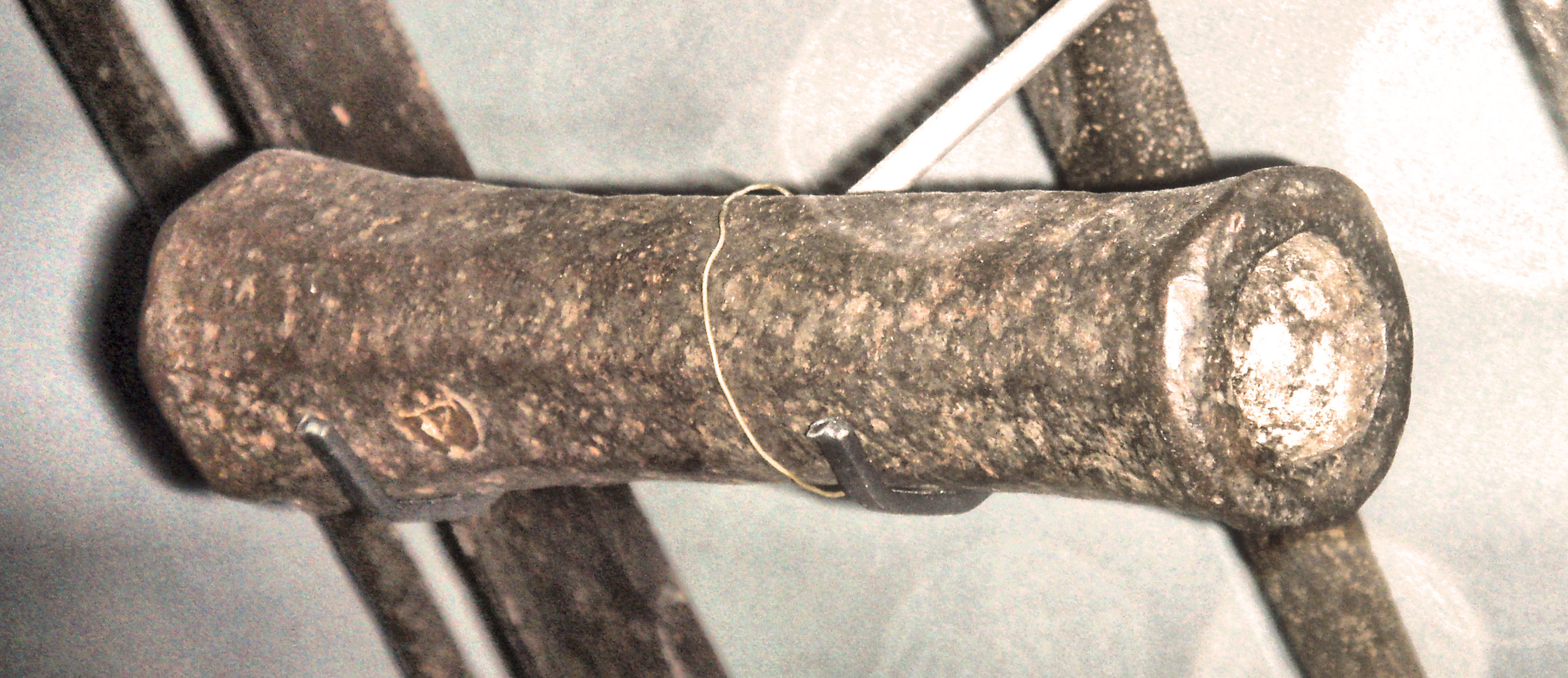 |
Western European handgun, 1380. 18 cm-long
and weighing 1.04 kg, it was fixed to a wooden pole to facilitate manipulation.
Musée de l'Armée.
Single-shot pistols are theoretically the simplest pistols. The earliest handguns were single-shot, muzzle-loading guns with ignition provided by inserting a smoldering match cord into a touch hole. As such, they were essentially nothing more than miniature cannons, small enough to be handheld. Improvements followed in subsequent centuries, as various types of locks (ignition devices) were invented. In the matchlock, the separate match cord was affixed to a spring-loaded pivot which could be tripped by a trigger. In the wheellock, a mechanism analogous to that used in today's cigarette lighters replaced the smoldering match cord. In the 17th century, the flintlock, which strikes a flint against steel, appeared. (The flintlock, amazingly, remained state-of-the-art for some two hundred years.) In the 19th century, percussion caps were developed, followed shortly by modern integrated-primer cartridges, and hammers therefore traded their flint for firing pins. |
|
|
|
| Single-shot pistols
continue to be manufactured today and are often used for handgun hunting
game, including big game. The most powerful handguns are capable of taking
all game including elephant.
Not long after the very beginning of firearms, inventors began experimenting with multi-barreled weapons in the quest for the ability to fire more than one shot before needing to reload. Not surprisingly, all types of firearms were included in their efforts, from volley guns to analogously devised handguns. Before anyone had developed a practical capability for delivering multiple loads to one barrel in quick succession (which is how repeating fire is usually accomplished today), gun smiths were aggregating multiple loaded barrels into one place. |
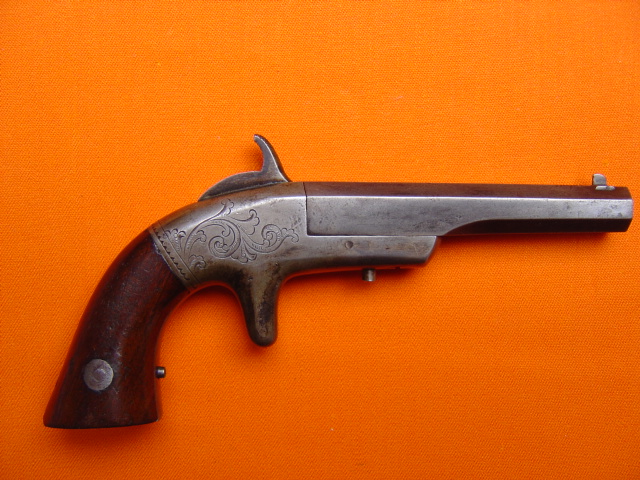 |
|
|
|
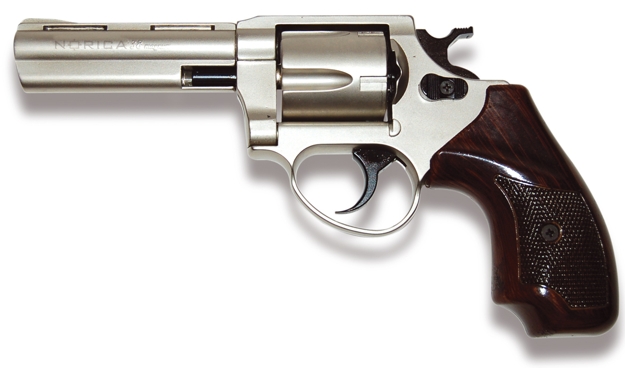 |
With the development of the revolver in the 19th century, gunsmiths
had finally achieved the goal of a practical capability for delivering
multiple loads to one handgun barrel in quick succession. Revolvers feed
ammunition via the rotation of a cartridge-filled cylinder, in which each
cartridge is contained in its own ignition chamber, and is sequentially
brought into alignment with the weapon's barrel by a mechanism linked to
the weapon's trigger (double-action) or its hammer (single-action). These
nominally cylindrical chambers, usually numbering between five and eight
depending on the size of the revolver and the size of the cartridge being
fired, are bored through the cylinder so that their axes are parallel to
the cylinder's axis of rotation; thus, as the cylinder rotates, the chambers
revolve about the cylinder's axis.
There is a hybrid form of the revolver, known as the automatic revolver, which combines the revolving chamber concept of the conventional revolver with the recoil-harnessing, self-cycling ability of the semi-automatic pistol. Weapons of this type are rare, as the technology was quickly rendered obsolete by a combination of the double-action revolver and the semi-automatic pistol. |
|
|
|
| The first lever action pistols were based on a Horace Smith and Daniel B. Wesson patent of 1854. The Smith & Wesson pistols were made in Norwich, Connecticut 1854-55. In 1855, Oliver F. Winchester became an active investor and H. Smith and D.B. Wesson both dropped out of the enterprise. In July 1855, the name was changed to Volcanic Repeating Arms Company, and later to New Haven Arms Company, opening an important chapter in Winchester's history. The production of the Volcanic pistols lasted until 1860. Two models were produced: The Navy Pistol .41 cal. with 6" / 8" / 16 " barrels and a Pocket Pistol .31 cal. with 3 1/2" / 6" barrels. |
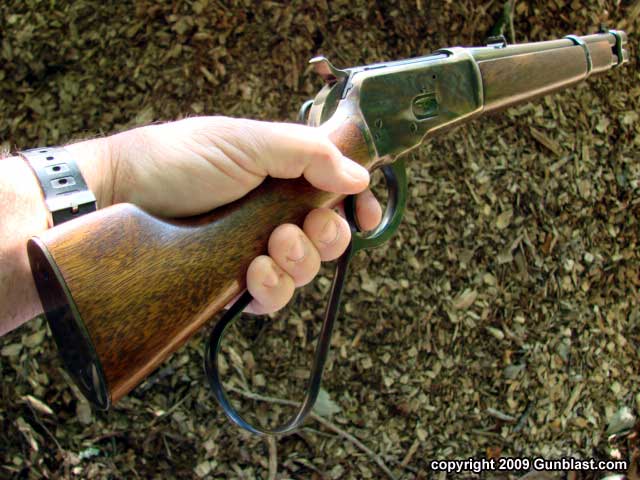 |
|
|
|
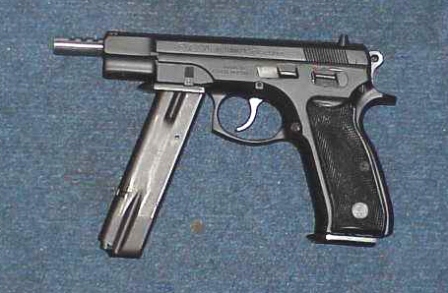 |
A machine pistol is generally defined as a firearm designed to be fired with one hand, and capable of fully automatic or selective fire. While there are a number of machine pistols such as the Glock 18 and later models of the Mauser C96, these are rare; the light weight, small size, and extremely rapid rates of fire of a machine pistol make them difficult to control, making the larger and heavier submachine gun a better choice in cases where the small size of a machine pistol is not needed. Most machine pistols can attach a shoulder stock (the Heckler & Koch VP70 would only fire single rounds at a time unless the stock was attached); others, such as the Beretta 93R, add a forward handgrip. Either of these additions technically create a legal non-pistol under the US National Firearms Act, as pistols are by definition designed to be fired with one hand. The addition of a stock or forward handgrip is considered a design change that creates either a short-barreled rifle or any other weapon, and therefore such additions are generally only found on legal machine guns. |
|
|
|
| Auto Loading Pistol P.D.W. |